In strategic marketing, product bundling emerges as a powerful tactic, combining two or more products into a single, enticing package. The impact of this approach extends far beyond mere convenience; it’s backed by compelling statistics that reveal its prowess in boosting sales, simplifying complexity, and establishing an appealing pricing structure. This contributes to enhanced customer satisfaction and significantly influences purchasing decisions.
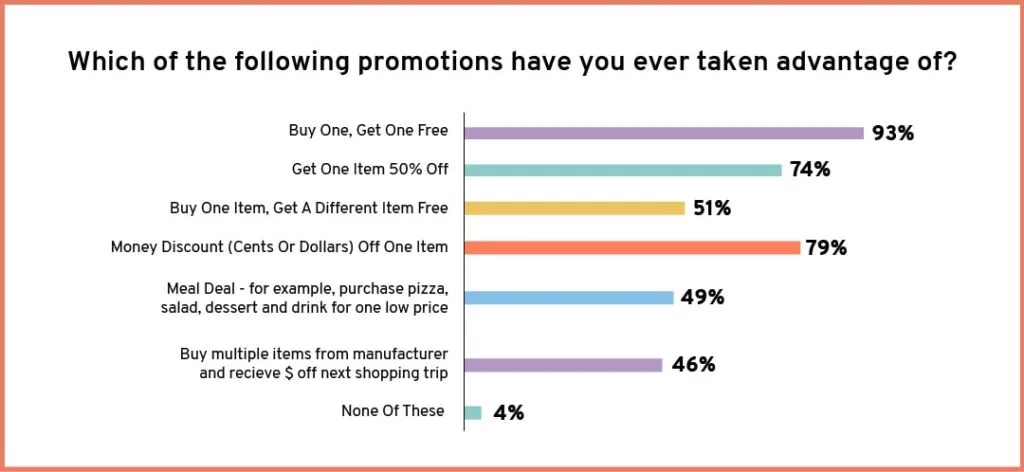
Consider these figures: studies show a 20% increase in average transaction value when products are bundled, and 68% of consumers prefer bundled offerings. Moreover, businesses that employ product bundling experience an average of 30% increase in revenue.
The benefits of product bundling are multi-faceted. It not only facilitates upselling and cross-selling opportunities but also optimizes inventory management. Furthermore, by presenting a curated selection of products, businesses can create a more memorable and personalized shopping experience for their customers.
Types of Product Bundling:
- Pure Bundling: In pure bundling, products are only available as a package and cannot be purchased separately. Customers must buy the entire bundle to access any individual item within it. This strategy is often used to promote related items that are best used together.
- Mixed Bundling: Mixed bundling allows customers to purchase items individually or as part of a bundle. This gives consumers the flexibility to choose the specific products they want while still offering the convenience and potential cost savings of a bundle. This strategy caters to a broader range of customer preferences.
- New Product Bundling: New product bundling involves combining a new or less popular product with an existing popular one. This encourages customers to try out the new product by offering it at a discounted rate when bundled with a well-established and desirable item.
- Joint Bundling: Joint bundling involves combining products from different manufacturers or brands. This type of bundling often occurs through partnerships or collaborations between companies, allowing them to offer complementary products as a cohesive package.
- Cross-Selling Bundling: Cross-selling bundling involves bundling products that are related or commonly used together. This strategy encourages customers to purchase additional items that enhance the use or experience of the main product. Cross-selling can be effective in increasing the overall value of a purchase.
- Subscription Bundling: Subscription bundling offers customers a recurring package of products or services for a set fee at regular intervals. This model is common in industries like streaming services, where customers subscribe to a bundle of content rather than paying for individual items.
- Freemium Bundling: Freemium bundling involves offering a basic product or service for free (freemium) while bundling additional features, upgrades, or premium content at a cost. This strategy allows businesses to attract a larger user base with a free offering and generate revenue through premium upgrades.
- Seasonal or Promotional Bundling: Seasonal or promotional bundling involves creating bundles for specific seasons, holidays, or special occasions. This can include limited-time offers, holiday-themed bundles, or promotions tied to specific events to attract customers during those periods.
Companies That Use Product Bundling:
1. Amazon

Amazon is recognized as a master of product bundling, skillfully incorporating this strategy into its iPad product page to enhance customer experience and boost sales. The key features of Amazon’s approach include a prominently displayed “Buy it with” section, strategically suggesting additional items such as a tempered glass film and an iPad case intended for use together with the main product. This section serves as a visual prompt for customers, subtly creating a perceived necessity to protect their iPad and encouraging them to consider purchasing these complementary items.
One notable feature is the seamless integration of the combined price for these products when purchased together. By displaying the bundled price, Amazon subtly influences customers’ purchasing decisions, showcasing the overall value of acquiring the main product along with its suggested accessories. This transparent pricing strategy helps customers make informed choices and adds convenience to the shopping process.
2. Kylie Cosmetics
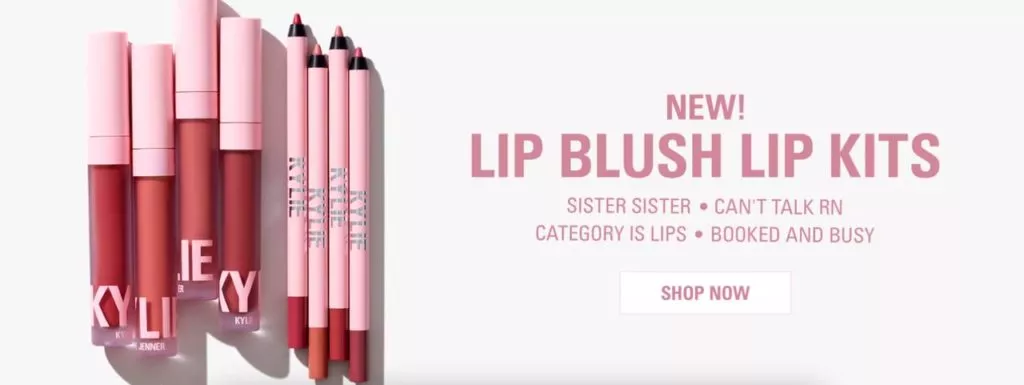
Kylie Cosmetics, known for its popular lip kits, employs product bundling to drive sales and encourage cross-product usage. A key feature of Kylie Cosmetics’ strategy is the introduction of new collections through thoughtfully curated bundles. For instance, the lip blush lip kits consist of two coordinating lip products, strategically designed to complement each other. The brand goes further by recommending the use of lip liners with lipsticks, showcasing a comprehensive understanding of its product line and providing customers with valuable insights for a complete beauty regimen.
The product presentation on Kylie Cosmetics’ platform includes vivid images and clear descriptions, emphasizing the aesthetic appeal and benefits of the bundled products. A strategically placed “Shop Now” call-to-action button serves as an effective conversion tool, guiding interested customers towards making a purchase.
3. The Body Shop
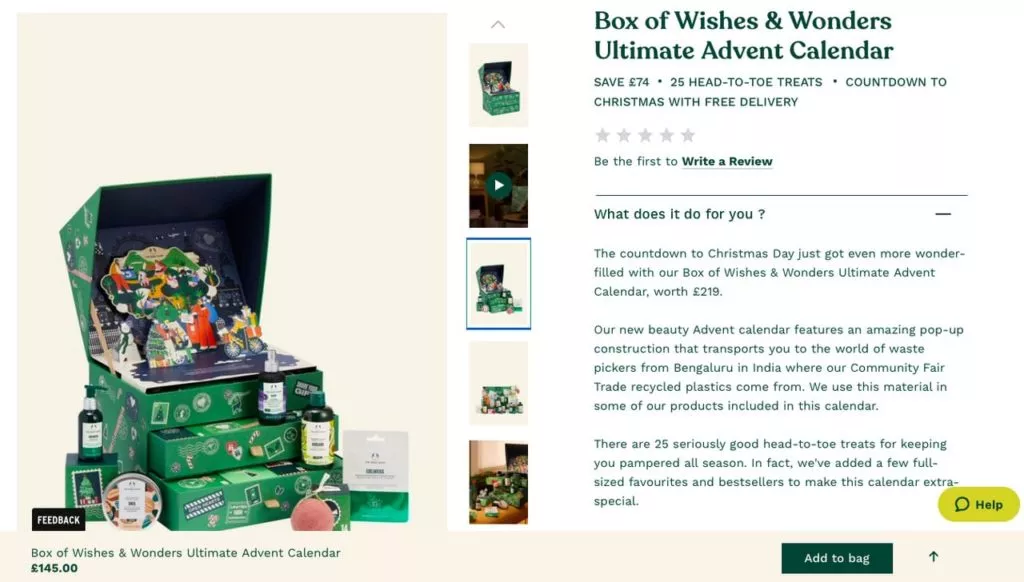
The Body Shop showcases its ingenuity in product bundling with the advent calendar, a holiday-themed offering designed to captivate customers during the festive season. The key features of this strategy include the presentation of diverse products in an enticing kit, leveraging the gift-giving spirit associated with the holidays. To enhance its allure, The Body Shop incorporates Christmas-themed gift wrapping for the advent calendar, creating a visually appealing and festive package.
The headline, “Box of Wishes & Wonders,” contributes to the positive and joyful narrative, adding an emotional touch to the product. Short descriptions highlight potential savings when purchasing the bundled set, emphasizing the value proposition for customers. The detailed product description further enriches the customer’s understanding by providing information on the product’s origins and core values, fostering a sense of connection and trust.
Learn about surge in ecommerce site traffic here.
4. La Roche Posay

La Roche-Posay adopts a thorough and comprehensive approach to product bundling, prominently featured on its dedicated gift guide page, which encompasses diverse categories. One standout category within this page is the “skincare value sets,” meticulously curated kits designed for various skincare routines. Each category on the gift guide page offers a detailed presentation of related products, complete with titles, pricing details, and user ratings, resulting in a visually appealing and highly informative layout. The skincare value sets, in particular, play a pivotal role in encouraging customers to adopt a complete skincare regimen by presenting carefully selected products that complement each other seamlessly. This strategic approach effectively drives sales by not only offering individual products but by guiding customers towards a holistic skincare routine.
5. L’Occitane
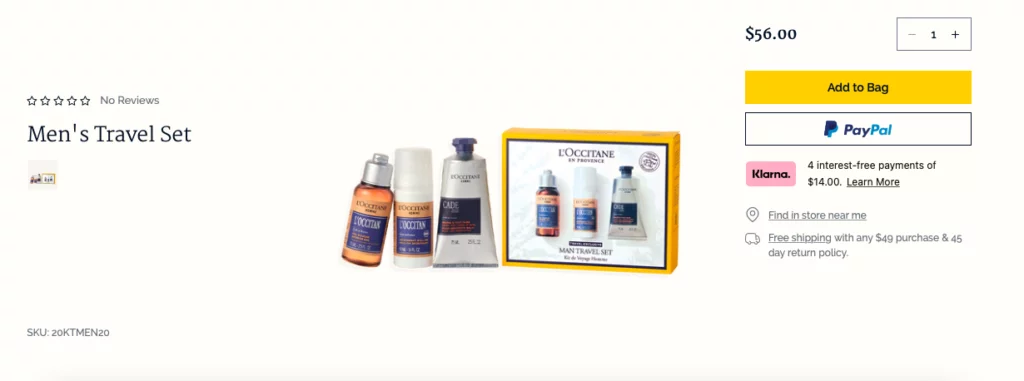
L’Occitane exemplifies the art of product bundling through a captivating array of gift sets, a strategy that is prominently showcased in its product offerings. The brand consistently groups products from the same collections into bundled and gift-set formats. An exemplary illustration of this approach is the Men’s Travel Set, a thoughtfully crafted ensemble that ingeniously combines products in compact quantities and diverse types. This travel-friendly set allows customers to explore different items concurrently, catering to their varied needs while maintaining convenient proportions for on-the-go use. The product presentation is enriched with a clear image featuring the bundled products along with star ratings, providing potential buyers with valuable insights. Furthermore, the product page thoughtfully incorporates pricing details and shipping information, enhancing the overall customer experience. Crafting travel sets of this nature proves to be an effective strategy for L’Occitane, facilitating increased sales and effectively promoting products, whether it involves introducing new items or bundling together related collections in an enticing manner.
6. Lush
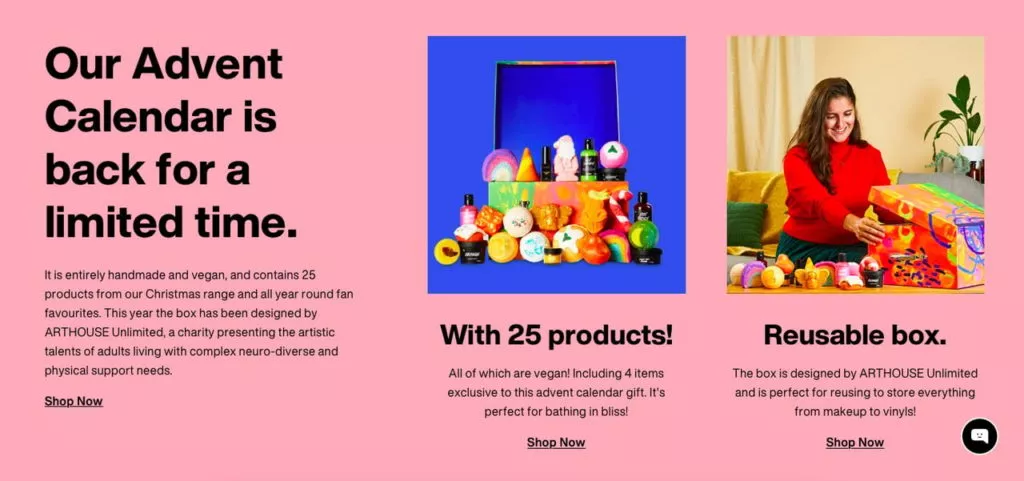
Lush elevates the art of product bundling through the introduction of its advent calendars, creating a captivating narrative with the headline, “Our Advent Calendar is back for a limited time.” This strategic use of language, incorporating the trigger phrase “limited time,” immediately captures visitors’ attention and instills a sense of urgency, urging customers to seize the opportunity. The calendar’s description provides a detailed glimpse into its contents, complemented by impactful headlines like “With 25 products!” and “Reusable box.” These highlights not only emphasize the abundance of products but also draw attention to the eco-friendly and reusable nature of the well-designed box, enhancing its overall value. The inclusion of a strategically placed “Shop Now” call-to-action button serves as the final push in concluding the narrative, prompting immediate action from intrigued customers.
7. The Ordinary
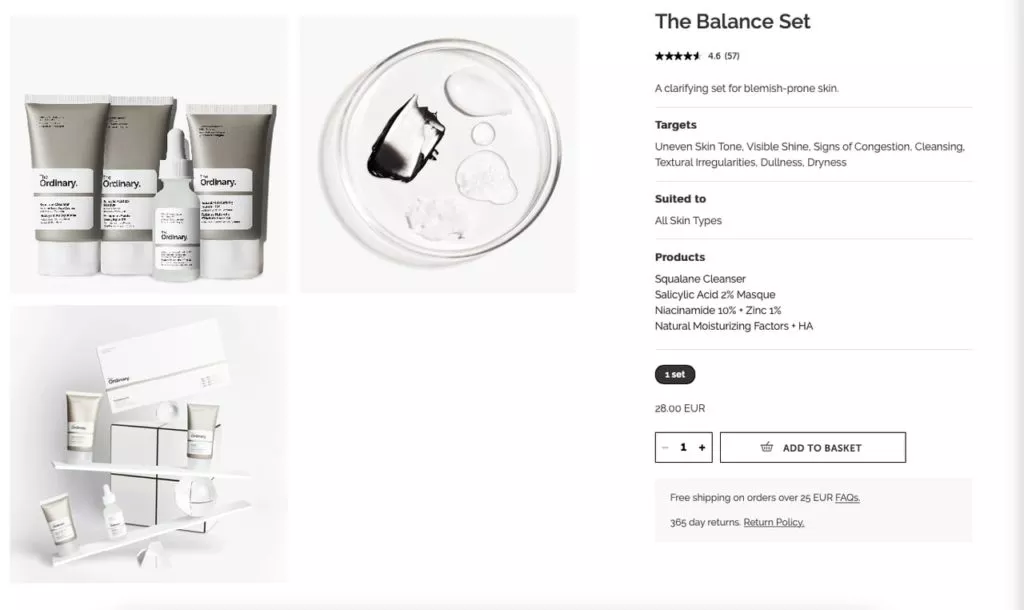
The Ordinary, in its pursuit of effective product bundling, introduces “The Balance Set,” a thoughtfully curated collection designed for synergistic use. This set comprises diverse products explicitly tailored to different skin types, simplifying customers’ choices and catering to their unique skincare needs. The product page is enriched with detailed product names, star ratings, and clean images that prominently feature references to achieving balance. This meticulous presentation not only engages customers visually but also provides valuable social proof through star ratings, reinforcing the set’s efficacy. The strategic alignment of products with specific skin types exemplifies a customer-centric approach, offering a template for businesses seeking to identify their target audience and tailor product sets accordingly.
8. BeardBrand
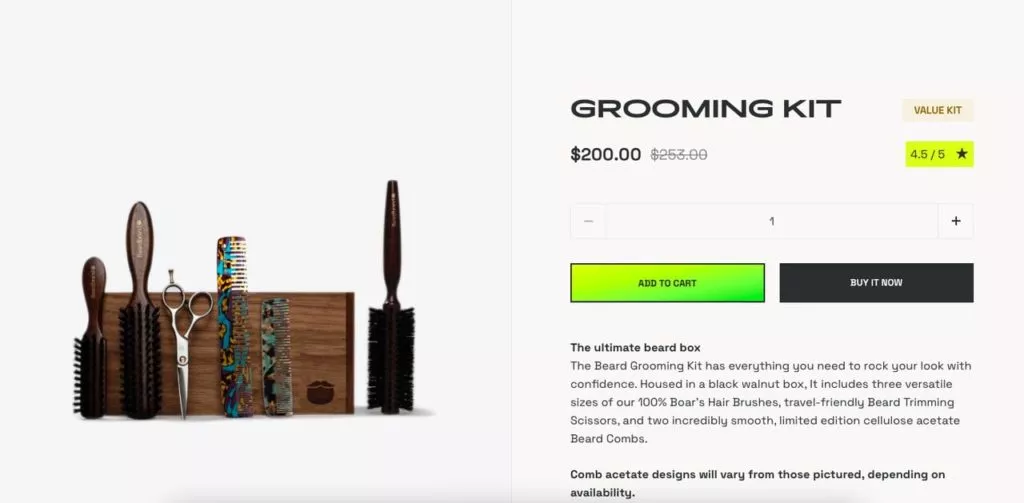
BeardBrand showcases its expertise in product bundling through the introduction of a comprehensive grooming kit. The visual appeal of the product image is complemented by a well-crafted description that outlines the contents of the set. Inclusion of star ratings provides tangible social proof, underscoring the effectiveness of the bundled products. This example highlights the potency of bundling related products with a specific purpose, demonstrating how such strategies can significantly enhance sales by capitalizing on the existing interest in a particular grooming category. The overall presentation serves as a testament to the brand’s commitment to providing a curated and effective grooming solution, enticing customers with a well-rounded set of products tailored to their needs.
9. Clean Beautique
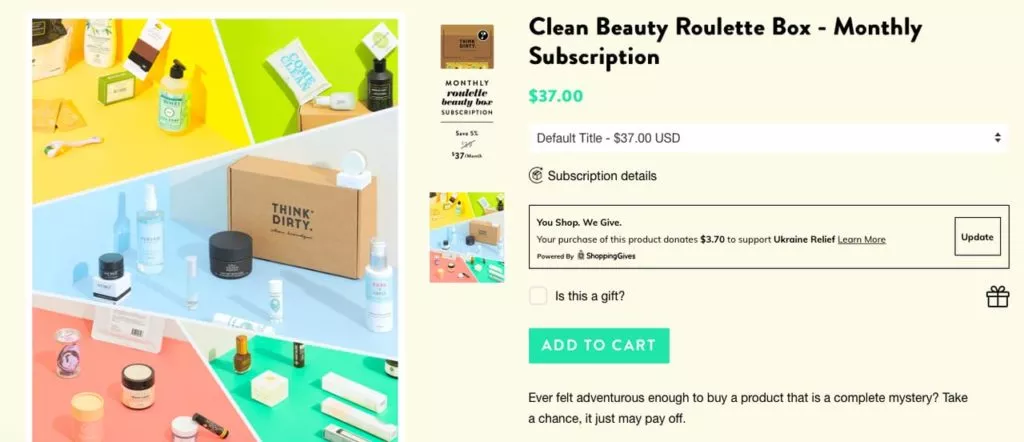
Clean Beautique injects a playful and mysterious element into its product bundling strategy through the introduction of the “Clean Beauty Roulette Box,” a monthly subscription box featuring undisclosed products. This imaginative approach aims to evoke curiosity and entice potential customers to make a purchase. The clever and witty copy, exemplified by phrases like “Ever felt adventurous enough to buy a product that is a complete mystery? Take a chance; it just may pay off,” enhances the overall appeal of the subscription box. The product page is thoughtfully designed, featuring images of potential mystery products and a compelling “Add to cart” call-to-action button, creating an interactive and engaging shopping experience.
10. Functions of Beauty
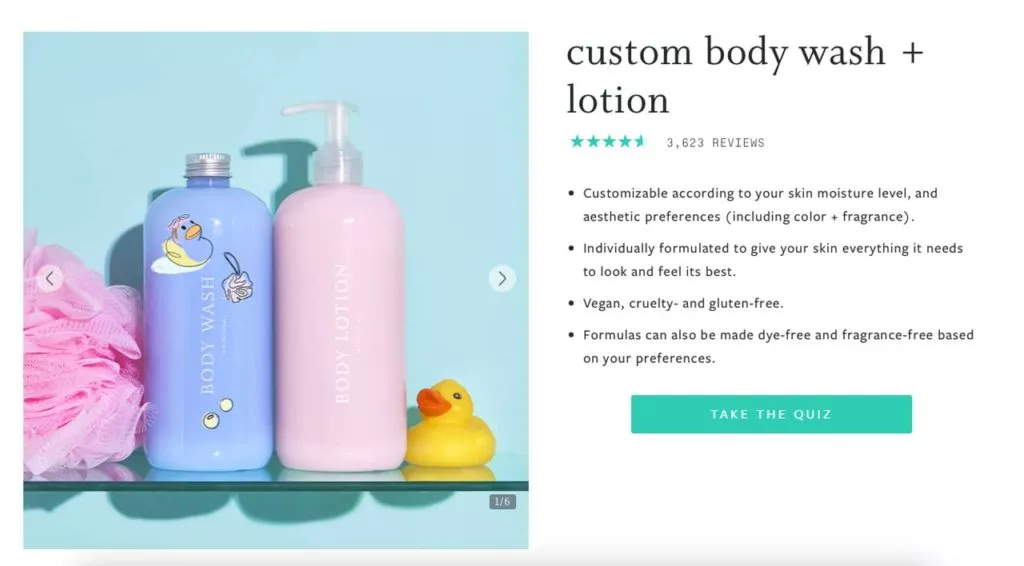
Function of Beauty adopts a personalized and customer-centric approach to product bundling with its customizable body wash and lotion set. The brand empowers customers to tailor the products based on their individual preferences and needs. The inclusion of a quiz on the product page is a strategic move, guiding customers through a personalized journey to create a body care set that aligns perfectly with their unique requirements. The product page provides a comprehensive yet concise description of the customizable set, complemented by clear and informative product images. This approach fosters an engaging and informative shopping experience, aligning with the brand’s commitment to personalized beauty solutions.
11. Zing

Zing introduces a compelling sense of urgency in its product bundling strategy with the “Mala’s Besties Combo,” accentuating its limited availability. By crafting a narrative that emphasizes the bundle’s exclusivity for a limited time, Zing effectively taps into customers’ fear of missing out (FOMO), thereby boosting sales. The combo set, comprising randomly selected products, is presented on the product page with detailed pricing information, star ratings, and a clear description. The strategic inclusion of customer favorites within the bundle adds allure, compelling customers to seize the opportunity before the limited run concludes. This approach not only drives sales but also creates a sense of excitement and urgency among potential buyers, enhancing the overall appeal of the product bundle.
Conclusion:
The selection of products for bundling warrants careful consideration, requiring an analysis of your brand’s performance and a keen understanding of your target audience. This knowledge proves instrumental in crafting compelling product bundles that resonate and convert effectively.
Remember to adapt your product bundling strategies to align with seasonal marketing campaigns, optimizing their impact. We invite you to share your innovative product bundling ideas in the comments section.
FAQs on Product Bundling:
Why is Product Bundling Effective?
Product bundling proves effective as it enhances the average order value, encouraging customers to purchase more items in a single transaction. It creates a perception of essentiality, positioning bundled products as integral components. Additionally, bundling allows the sale of multiple items at a reduced combined price, enticing customers with cost savings. This strategy also facilitates cross-promotion, offering high-value items with more affordable alternatives in a bundle.
What are The Types of Bundling?
Several types of product bundling strategies exist, including:
- Product line bundling
- Cross-selling
- Up-selling
- Gift sets
- Customer favorites bundling
- BOGO (Buy one, get one)
- New collection bundling
- Mix and match bundling
Which Kind of Products Should You Bundle?
Product bundling choices are diverse, and selecting products based on certain patterns can be beneficial. Consider bundling products that:
- Complement each other
- Share a common theme or aesthetic
- Appeal to a similar target audience
- Can be used together
- Are popular but not typically sold together
- Are from different categories or stores
- Align with seasonal themes for targeted campaigns.



